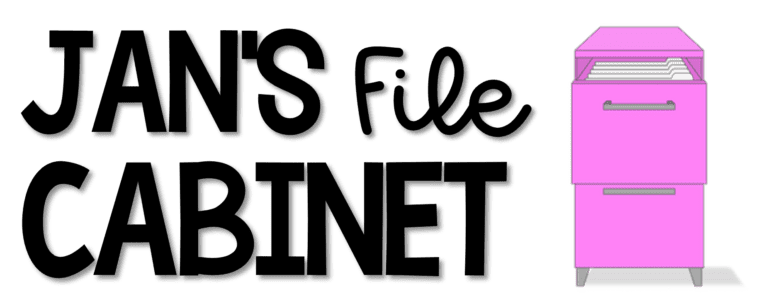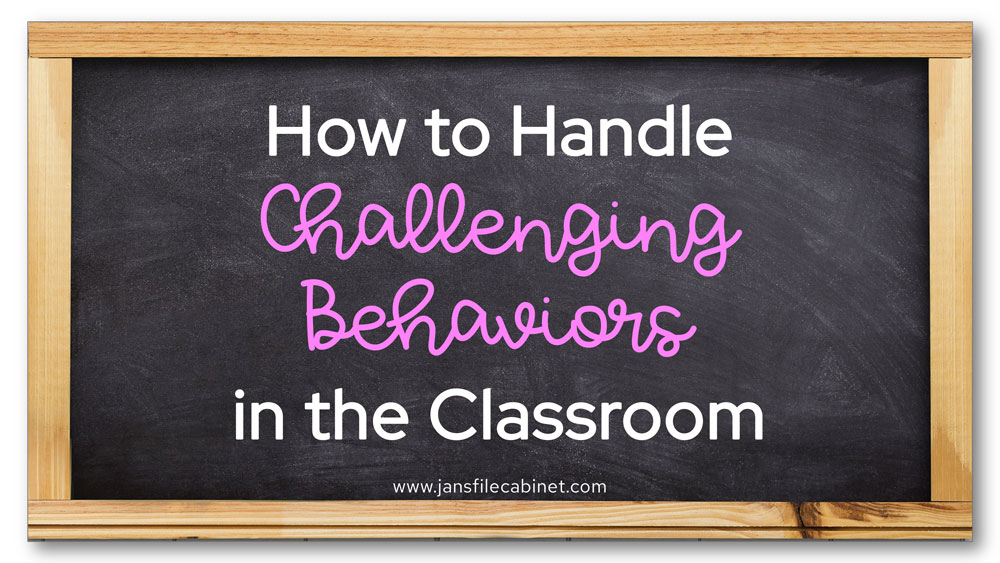Manage challenging behaviors in your intermediate or middle school classroom with strategies that create a positive learning environment for all students.
One of our greatest challenges is dealing with behaviors that disrupt the learning environment. Challenging behaviors can hinder students’ academic progress and lead to frustration.
It is important to head off behaviors before they occur, but we also need to have some strategies ready for when they do happen. Analyzing behaviors to understand why they are occurring is also essential.
Table of Contents
ToggleWhat are some common challenging behaviors?
Before we delve into strategies for behavior management, let’s look at some of the most common behaviors we see in our classrooms.
Understanding the reasons for these behaviors is essential for effective classroom management. Students may be seeking power (control over their environment), revenge (in response to perceived injustices), attention (positive or negative), or avoidance of difficult or uncomfortable situations.
Disorganization
Disorganized students may struggle to keep track of materials, assignments, and schedules. Disorganization can stem from difficulties with executive functioning skills, such as following multi-step directions and time management.
Procrastination
Procrastination is putting off tasks or assignments until the last minute. Some reasons for procrastination include anxiety, lack of motivation, or perfectionism.
Inattention
Inattentive behavior may appear as daydreaming, difficulty focusing, or being easily distracted. It can result from various factors, including attention deficit disorders, personal problems, or boredom.
Talking and Making Noises
Talking at inappropriate times or making noises can undoubtedly disrupt the learning environment. These challenging behaviors may stem from boredom, a need for social interaction, or not understanding the expectations.
Chronic Tardiness and Absenteeism
Students who are frequently late to class or absent may face personal challenges like transportation issues, family responsibilities, or disengagement from the curriculum.
Unauthorized Use of Electronic Devices
Using smartphones or other electronic devices in class has become commonplace, but these can be a distraction to students. Students may play games or watch videos to reduce boredom or seek entertainment.
Lack of Respect
This behavior involves students ignoring classroom rules, interrupting others, or displaying a disrespectful attitude toward peers and teachers. It may be linked to poor social skills or poor role modeling.
Gaslighting
Gaslighting is a behavior where a student tries to make others doubt their perceptions, often leading to confusion and conflict. It may be a defense mechanism or a way to gain control.
Withdrawal
Some students withdraw from social interactions and classroom activities. This challenging behavior may indicate emotional or psychological struggles, such as anxiety, depression, or a history of trauma.
Defiance
Defiant behavior involves open resistance or refusal to follow instructions. This can be a way for students to assert their independence or challenge authority figures.
Verbal or Physical Aggression
Aggressive verbal or physical behaviors can result from frustration, anger, or a history of exposure to violence. They require immediate attention to ensure the safety of all students and staff.
By recognizing these behaviors and their underlying causes, we can better address the root issues and develop targeted strategies to support students in creating a positive learning environment.

What are some strategies for handling challenging behaviors?
Students must have an environment conducive to learning if they are to grow to their fullest potential as independent readers and independent writers.
With patience, understanding, and the right strategies, you can create a positive learning environment for your students. Let’s explore 15 strategies to help prevent challenging behaviors and manage them effectively if they do occur.
1. Develop positive relationships with students.
It’s essential to get to know your students’ interests and backgrounds. Show them genuine care and empathy, which will help build trust and rapport. Additionally, engage in conversations outside of academics to establish connections.
2. Establish clear and consistent rules and expectations.
Create rules that clearly outline the expectations for behavior. Furthermore, discuss the reasoning for each rule to help students understand the importance of following them. Post these rules in the classroom and refer to them regularly.
3. Use positive reinforcement to encourage desired behaviors.
Recognize and celebrate small achievements and improvements in behavior. In addition, offer specific and timely praise, highlighting the behaviors you want to encourage.
4. Be consistent in your response to challenging behaviors.
Ensure that consequences for misbehavior are fair and applied consistently. Moreover, avoid making exceptions or changing the consequences based on emotions or circumstances. This consistency helps students understand what to expect.
5. Employ non-verbal cues to redirect behavior.
Develop a set of non-verbal cues that can be used to communicate discreetly with students. Use these cues to redirect off-task behavior and signal when it’s time to refocus. Non-verbal cues can be less confrontational and help maintain a positive classroom atmosphere.
6. Listen to students’ concerns and work together to find solutions.
Create a safe space for students to express their thoughts and feelings without judgment. Furthermore, practice active listening by giving your full attention, asking clarifying questions, and validating emotions.
7. Offer choices to empower students and reduce defiance.
Provide students with options within reasonable limits to give them a sense of control. Clearly define the choices available and ensure they align with classroom expectations. Consequently, this approach can reduce power struggles and increase student engagement.
8. Model the behaviors you want to see in your students.
Demonstrate respect, patience, and active participation in the learning process. Additionally, set an example by following classroom rules and consistently displaying a positive attitude. Your attitude and behavior can serve as a powerful teaching tool for students.
9. Help students address issues through conflict resolution.
Teach students strategies for resolving conflicts, such as active listening, compromise, and problem-solving. Moreover, encourage open discussion when conflicts arise and guide students to express their concerns respectfully.
10. Teach students to help mediate conflicts among their peers.
Train selected students as peer mediators to help their classmates resolve disagreements through a formal process. This can empower students to take responsibility for a positive classroom environment. It also helps promote empathy and problem-solving skills.
11. Identify the causes of challenging behavior and provide support.
Conduct informal assessments such as surveys and observations to understand the specific triggers and reasons for a student’s behavior. Collaborate with special education or support staff to address unique challenges as needed.
12. Teach time management skills.
Incorporate time management lessons into your curriculum to help students stay organized and learn how to budget their time. In addition, offer check-ins and guidance to ensure students are making progress with these skills.
13. Maintain open communication with parents and guardians.
Initiate regular communication with parents and guardians to discuss student progress and behavior. Collaborate on strategies that can be implemented at home and in the classroom to reduce challenging behaviors.
14. Incorporate technology as a tool for engagement.
Integrate technology into lessons in a purposeful way to engage students and prevent boredom. Ensure the technology aligns with the lesson’s objectives so there is an authentic reason for using it.
15. Involve other professionals in more challenging cases.
Recognize when a student’s behavior goes beyond your expertise and requires specialized intervention. Also, consult with school counselors, psychologists, or intervention specialists to assess and address complex behavior issues.
Remember that every student is unique; what works for one student may not work for another. By implementing these tips and tailoring your approach to individual needs, you’ll be better equipped to address challenging behaviors effectively and promote a successful learning experience for all.
If you need help creating an environment that is conducive to learning, you might want to read 6 Effective Ways to Calm the Classroom.
If you don’t want to miss my upcoming blog posts, join my email list. By signing up, you’ll also receive exclusive freebies!



